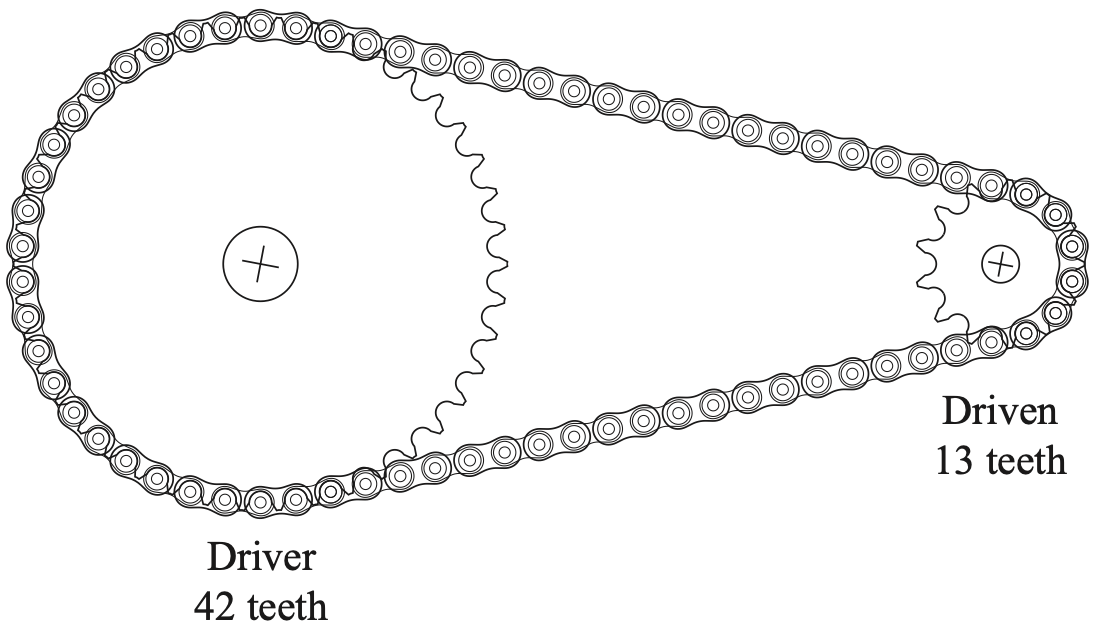A simplified image of a bicycle chain drive is shown.

If a cyclist is pedalling at 70 revolutions per minute (RPM), what is the RPM of the driven wheel?
- 3.2
- 21.7
- 226.2
- 546.0
Aussie Maths & Science Teachers: Save your time with SmarterEd
A simplified image of a bicycle chain drive is shown.

If a cyclist is pedalling at 70 revolutions per minute (RPM), what is the RPM of the driven wheel?
\(C\)
\(\text{Velocity Ratio}\ (VR)\ = \dfrac{\text{output teeth}}{\text{input teeth}} = \dfrac{13}{42}=0.3095\)
\(\text{Output speed (RPM)}\ = \dfrac{\text{input speed}}{VR} = \dfrac{70}{0.3095}=226.2\)
\(\Rightarrow C\)
A pulley system is shown.
What is the mechanical advantage of this pulley system?
`C`
`=>C`
The diagram shows a gear train.
The mechanical advantage of the gear train is 1.6 : 1 with an efficiency of 80%.
Calculate the number of teeth on the driven gear. (3 marks)
--- 6 WORK AREA LINES (style=lined) ---
`18\ text{teeth}`
| `n` | `=(MA)/(VR)` | |
| `VR` | `=(MA)/n=1.6/0.8=2` |
| `VR` | `=text{Driven}/text{Driver}` | |
| `:.\ text{Driven}` | `=VR xx text{Driver}` | |
| `=18\ text{teeth}` |
Using examples, explain why gears are used in the design of vehicles. (3 marks)
--- 6 WORK AREA LINES (style=lined) ---
The diagram shows a seesaw being used by two children, one of mass 25 kg and the other of mass 20 kg. It has a corroded pivot mechanism that reduces its efficiency by 25%.
What is the mechanical advantage of the seesaw?
`B`
`=>B`
To change a tyre on a bus, a system of pulleys, as shown, is used to lift the wheel and tyre to re-fit them back on the bus. The wheel and tyre have a combined mass of 95 kg.
What effort is required to lift the wheel and tyre if the efficiency of the pulley system is 80%? (3 marks)
--- 6 WORK AREA LINES (style=lined) ---
`296.875\ text{N}`
| `W` | `= 95 xx 10 = 950\ text{N}` | |
| `VR` | `= 4\text{ (number of ropes to load)}` | |
| `eta` | `= (MA)/(VR)` | |
| `MA` | `= VRxxeta= 4xx0.8= 3.2` | |
| `MA` | `= L/E` | |
| `E` | `= L/(MA)= 950/3.2=296.875\ text{N}` |